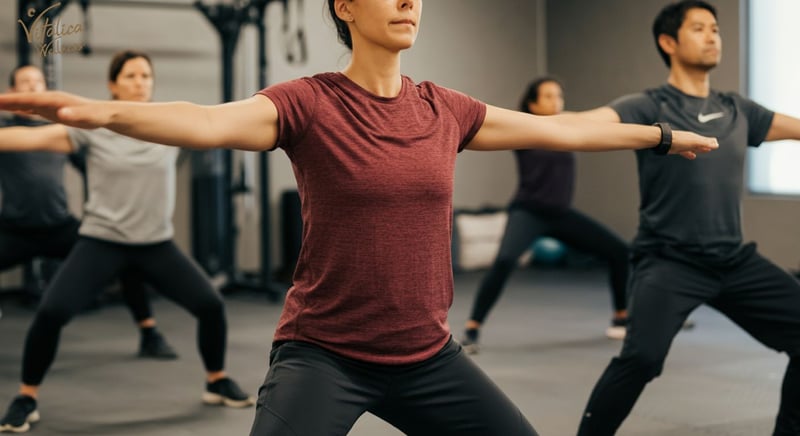Resilience in sports is not just about physical strength but a harmonious blend of mental toughness, emotional resilience, and strategic endurance building. Understanding its importance can be the game-changer in achieving peak athletic performance. In this comprehensive guide, we delve into effective strategies and advanced techniques to enhance your resilience, ensuring sustained performance and overcoming mental barriers. Whether you’re a seasoned athlete or a fitness newbie, mastering these endurance skills can elevate your sports journey to new heights.
Understanding the Importance of Resilience in Sports
Building Mental Toughness for Athletic Success
Resilience in sports is not just about physical endurance; it’s about mental toughness. Athletes who develop resilience can better manage stress and maintain focus during competitions. For instance, a marathon runner who encounters unexpected weather conditions must adapt quickly to maintain performance. Similarly, a tennis player facing a losing streak needs resilience to stay motivated and strategize effectively. These examples highlight how resilience training can significantly impact an athlete’s ability to overcome challenges and achieve long-term success.
Key Benefits of Resilience in Sports
- Improved stress management, allowing athletes to perform under pressure.
- Enhanced emotional resilience, helping athletes recover from setbacks.
- Increased focus and concentration, crucial for maintaining competitive edge.
By focusing on these benefits, athletes can cultivate a mindset that supports both their physical and mental performance, leading to sustained success in their sports careers.
Steps to Enhance Resilience in Athletes
- Incorporate mindfulness practices to improve mental clarity and focus.
- Engage in resilience training programs that simulate competitive pressures.
- Utilize stress management techniques to maintain emotional balance.
These steps provide a structured approach to building resilience, ensuring athletes are well-prepared to face the demands of their sport. By integrating these strategies, athletes can enhance their overall performance and achieve their goals more effectively.

Effective Strategies to Boost Your Endurance Levels
Structured Training for Enhanced Endurance
Structured training is essential for increasing endurance effectively. By following a well-designed program, athletes can progressively build their aerobic capacity. For example, a runner might start with shorter distances and gradually increase mileage over weeks. Similarly, a cyclist could incorporate hill climbs to enhance stamina. These methods ensure a steady improvement in endurance, allowing athletes to perform longer and more efficiently.
Key Components of Endurance Training
- Interval workouts that alternate between high and low intensity to boost cardiovascular fitness.
- Cross-training activities like swimming or cycling to prevent overuse injuries.
- Consistent rest and recovery periods to allow muscle repair and growth.
Incorporating these components into a training regimen helps athletes enhance their endurance while minimizing the risk of injury.
Steps to Increase Endurance
- Begin with a baseline assessment to determine current endurance levels.
- Set realistic goals and gradually increase training intensity and duration.
- Monitor progress and adjust the training plan as needed to avoid plateaus.
By following these steps, athletes can systematically increase their endurance, ensuring continuous improvement and peak performance.

Resilience Training Techniques for Lasting Performance
Integrating Mindfulness and Visualization for Mental Toughness
Mindfulness and visualization are powerful tools in resilience training, enhancing both mental toughness and physical endurance. Athletes can use mindfulness to stay present, reducing anxiety and improving focus during competitions. For instance, a swimmer might practice deep breathing techniques before a race to calm nerves and sharpen concentration. Similarly, visualization allows athletes to mentally rehearse their performance, building confidence and reducing performance anxiety. A basketball player, for example, might visualize successful free throws to enhance accuracy under pressure. These techniques not only boost resilience but also contribute to sustained athletic performance.
Technological Tools for Monitoring Resilience Progress
- Wearable devices that track physiological responses, providing insights into stress levels and recovery.
- Apps offering guided mindfulness sessions, helping athletes incorporate mental training into daily routines.
- Software platforms that analyze performance data, identifying areas for improvement in resilience strategies.
By leveraging technology, athletes can gain a comprehensive understanding of their resilience levels and make informed adjustments to their training regimens.
- Start by incorporating short mindfulness sessions into your daily routine to build mental clarity.
- Use visualization techniques to mentally prepare for various competitive scenarios.
- Utilize technology to track progress and adapt strategies for continuous improvement.
These steps offer a structured approach to resilience training, ensuring athletes develop the mental fortitude necessary for lasting performance.

Overcoming Mental Barriers: Building Toughness and Focus
Adaptive Strategies for Mental Resilience
Breaking through mental barriers requires adaptive strategies that enhance psychological resilience. Goal setting is a powerful tool, helping athletes maintain focus and motivation. For example, a sprinter might set incremental goals to improve their time, fostering a sense of achievement with each milestone. Positive reinforcement, such as self-praise or rewards, can also boost confidence and commitment. A gymnast, for instance, might celebrate mastering a new routine, reinforcing their dedication to training. Stress management techniques, like deep breathing or meditation, are essential for maintaining emotional balance, especially during high-pressure situations.
Techniques to Enhance Mental Focus
- Visualization exercises to mentally rehearse successful outcomes, enhancing confidence.
- Mindfulness practices to stay present and reduce distractions during training.
- Routine adjustments to incorporate mental breaks, preventing burnout.
These techniques help athletes sharpen their mental focus, ensuring they remain disciplined and dedicated to their training regimen.
- Identify specific mental barriers that hinder performance and develop targeted strategies to overcome them.
- Implement regular mental training sessions, integrating them seamlessly into physical workouts.
- Evaluate progress periodically, adjusting techniques to ensure continuous mental growth and resilience.
By following these steps, athletes can build mental toughness, enabling them to tackle challenges with confidence and maintain peak performance.
Integrating Mindfulness and Visualization for Enhanced Athletic Performance
Structured Endurance Training for Peak Athletic Performance
Adaptive Strategies for Overcoming Mental Barriers in Sports
Frequently Asked Questions
What is the importance of resilience in sports?
How can athletes enhance their endurance levels?
What role does mindfulness play in athletic performance?
What are some effective strategies for overcoming mental barriers in sports?
How can technology aid in resilience training for athletes?
Discover the path to holistic wellness and rejuvenate your mind and body with Vitalica Wellness. Call us today for a free consultation and start your journey towards a healthier you!
